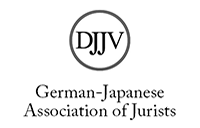Mass Accidents: A Challenge for Tort Law Comparative Analysis of Alternative Compensation Schemes in Japanese and French Law
Abstract
The modern legal system faces numerous challenges as it addresses social changes and technological innovations. This is particularly true of the rules governing the compensation of damages. Traditionally, tort law rules oblige the person by whose fault a damage to property or to a person’s bodily integrity has occurred, to repair the harm caused to the victim. However, the emergence of collective catastrophes disrupts the traditional approach to the compensation of damage. The main objective of the study is to analyse how recent public health crises and technological or industrial accidents have changed the legal mechanisms used to cover mass damages. The focus will be on the comparison between developments in French law, representing the family of romano-germanic legal systems, and Japanese law.
As is often the case in comparative law, the first impression of a deep-rooted opposition between continental European and Far Eastern legal conception is misleading. Certainly, in 1973, the Japanese legislature enacted a comprehensive administrative compensation scheme for victims of massive environmental pollution damages, thus putting Japan in a pioneering role in the field of alternative compensation techniques, recently confirmed by the post-Fukushima legislation. Nevertheless, the situation is no different in France where numerous compensation funds form a serious counterpart to traditional tort law, even if they do not necessarily offer a fully equivalent alternative.
In addition to alternative compensation schemes, another consequence of massive environmental and public health catastrophes can be seen in the lasting changes of ordinary tort law regulations, due to serial tort law claims made both in Japan and France. Indeed, major environmental pollution cases brought to Japanese courts in the late 1960s took the cliché of the non-litigiousness of Japanese society, stressed mostly in European and North-American legal literature, to absurd lengths. Looking back, Japanese and French tort law regulations obtained important impetus for the softening of conditions for liability and the increase of the amount of damages, precisely because victims’ associations initiated major tort lawsuits.






